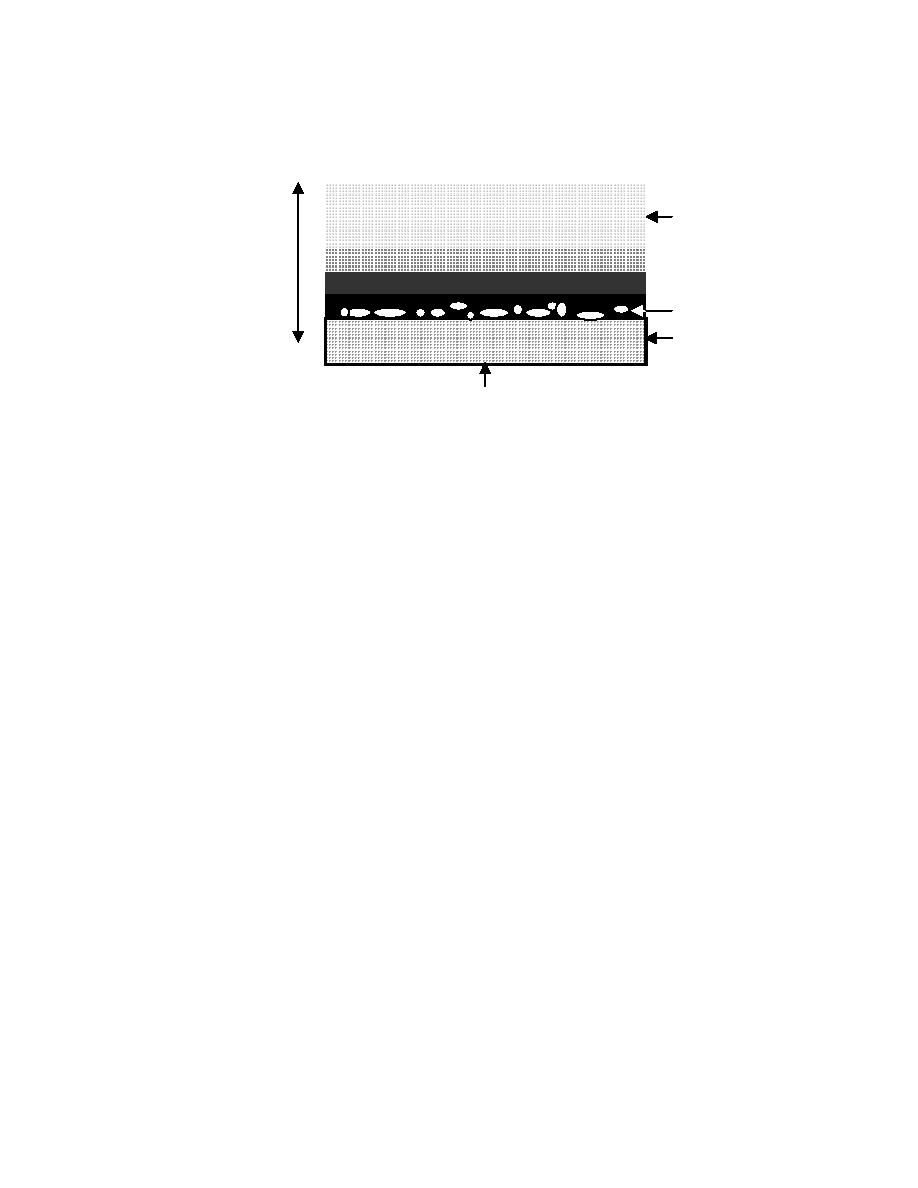
UFC 3-240-13FN
25 May 2005
Figure 3-10. Localized Scale Formation Process
Low
Hot Water
Dissolved Solids
Concentration
Gradient
Steam Bubble
Tube Wall
High
Heated Surface
3-2.1.2
Sludge Deposits. Sludge deposits can form when the precipitated
materials in the boiler water stick to the boiler tubes due to their hot surfaces as a result
of the same phenomenon described in paragraph 3-2.1.1. Scale and sludge often form
together.
3-2.1.3
Dissolved Solid Materials. Some dissolved solid materials become less
soluble as the water temperature increases. This situation occurs with most of the salts
As a result of this property, these materials tend to form scale in the hotter areas of the
boiler because they remain soluble in the cooler areas of the boiler. By using an
appropriate form of water treatment, these scaling agents can be removed from the
boiler system water either before they enter the boiler (external treatment) or after
(internal treatment), although it is often best to remove the dissolved magnesium and
calcium minerals (hardness) before they enter the boiler (see paragraph 2-2). With the
proper chemical treatment, they can be effectively controlled and treated internally in
the boiler.
3-2.2
consist of calcium and magnesium salts and iron oxide. Calcium and magnesium salt
deposits are white or off-white. Iron oxide scales are red or black deposits. The type of
scale can be identified accurately by deposit analysis. It is common to have more than
one type of scale in boiler deposits.
3-2.2.1
Calcium Carbonate. Calcium carbonate scale is white or off-white in color
and is formed by the breakdown of calcium bicarbonate with heat. Calcium carbonate
scale is formed in both untreated boilers and improperly treated boilers. A drop of a
dilute acid solution on the deposit will cause bubbling on the calcium carbonate scale
area as a result of the release of carbon dioxide. This procedure can be used to identify
this type of scale. Calcium carbonate scale can result when there is calcium hardness in
48



 Previous Page
Previous Page
